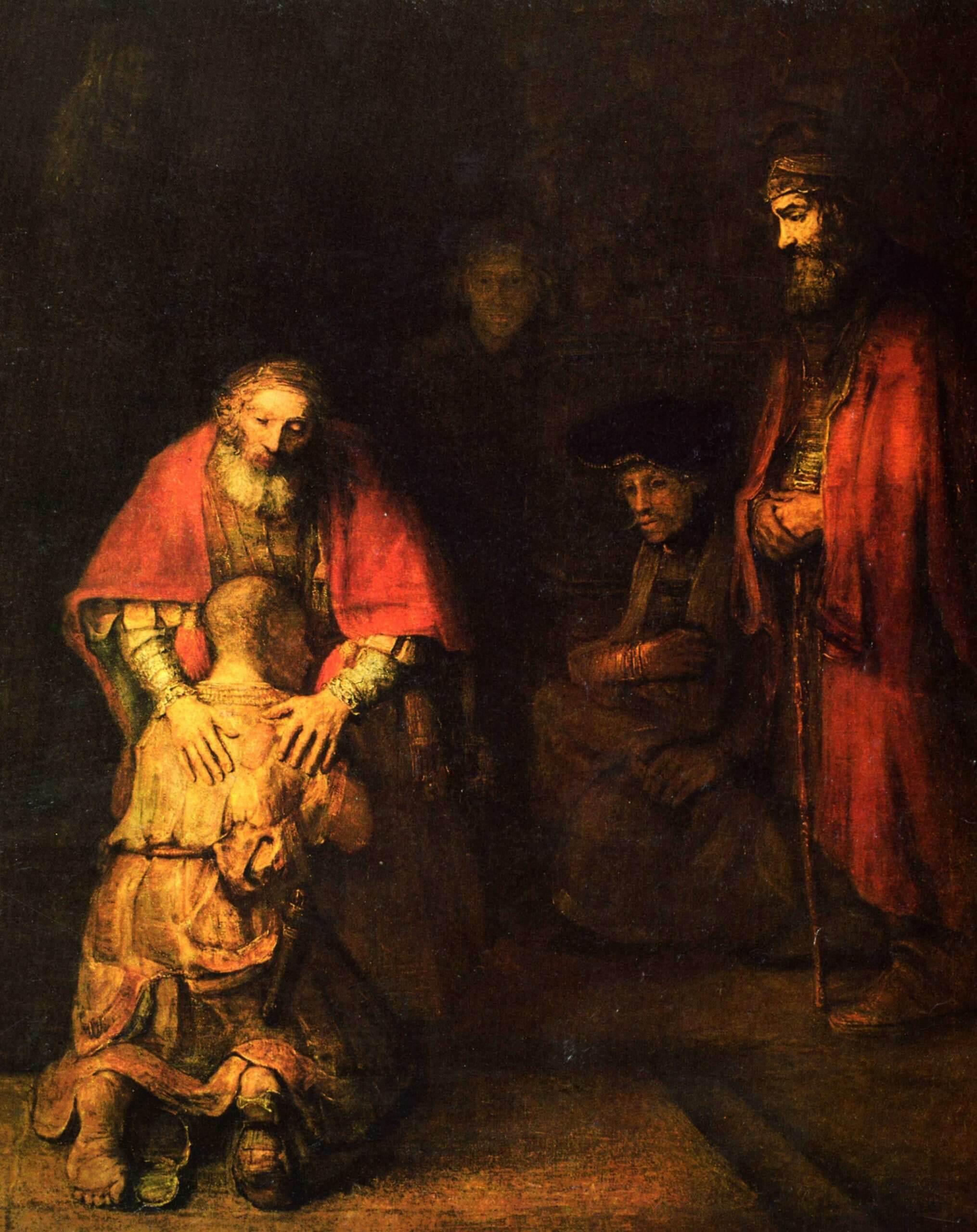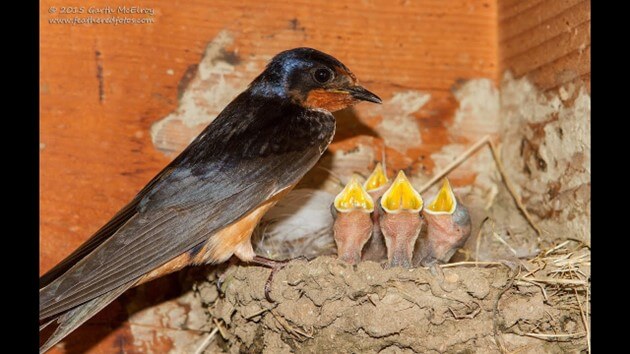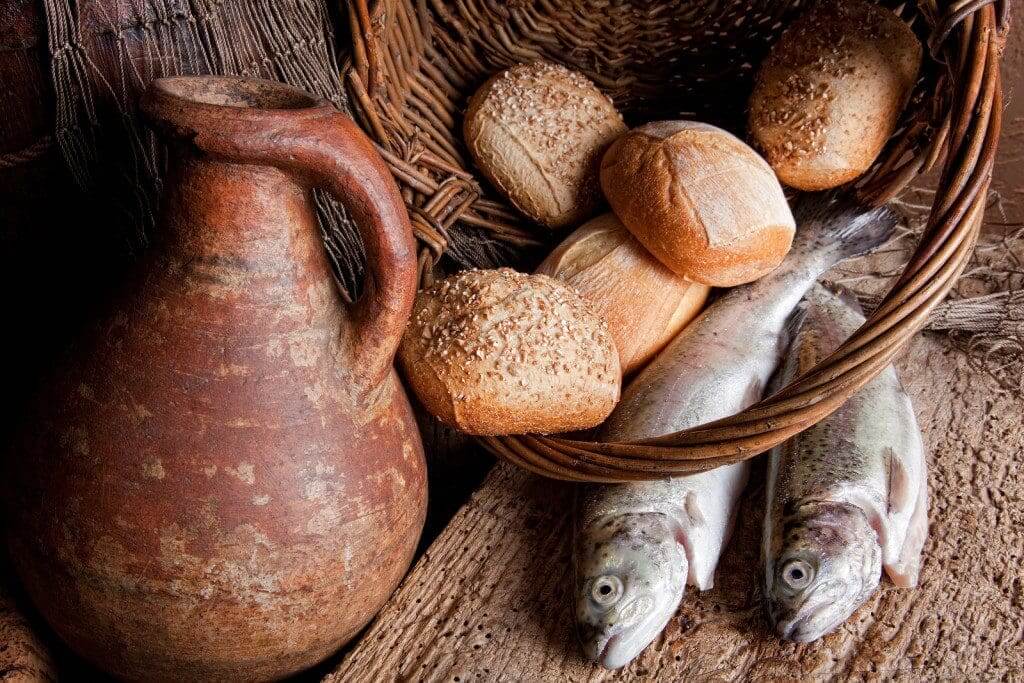Sermon preached by Sherman Hesselgrave on the fourth Sunday of Lent, March 14, 2010
Compassionate and generous God:
In Christ you have made us participants in your new
creation, where those who have been estranged and
alienated from you and from one another are brought
into the commonwealth of grace through the ministry
of reconciliation. Give us grace to be your
ambassadors of reconciliation wherever we may be.
Amen.
 The Parable of the Prodigal Son, or as I have come to call it, the Parable of the Compassionate Parent, is found only in the Gospel of Luke, and so, unlike many of the other parables of Jesus, we encounter it only once in the lectionary cycle. Three years ago, before Toronto was even a twinkle in my eye, I was scheduled to preach on this set of readings, and the new pastor at the Lutheran Church where I was working at the time recommended a book by Henri Nouwen with which I was not familiar: The Return of the Prodigal Son. The book was written after Nouwen had left his teaching position at Harvard and had come to Toronto to serve as Chaplain to the L’Arche community here. The catalyst for the book was Nouwen’s encounter with Rembrandt’s painting of the same name. The painting is large, like many of Rembrandt’s most famous works–eight and a half by nearly seven feet–and hangs in the Hermitage museum, once the Winter Palace of Russian emperors. Nouwen describes sitting with the painting for long hours, watching the changing light of the day animating the painting’s already dramatic chiaroscuro treatment of the subjects in the scene.
The Parable of the Prodigal Son, or as I have come to call it, the Parable of the Compassionate Parent, is found only in the Gospel of Luke, and so, unlike many of the other parables of Jesus, we encounter it only once in the lectionary cycle. Three years ago, before Toronto was even a twinkle in my eye, I was scheduled to preach on this set of readings, and the new pastor at the Lutheran Church where I was working at the time recommended a book by Henri Nouwen with which I was not familiar: The Return of the Prodigal Son. The book was written after Nouwen had left his teaching position at Harvard and had come to Toronto to serve as Chaplain to the L’Arche community here. The catalyst for the book was Nouwen’s encounter with Rembrandt’s painting of the same name. The painting is large, like many of Rembrandt’s most famous works–eight and a half by nearly seven feet–and hangs in the Hermitage museum, once the Winter Palace of Russian emperors. Nouwen describes sitting with the painting for long hours, watching the changing light of the day animating the painting’s already dramatic chiaroscuro treatment of the subjects in the scene.
Rembrandt has taken license in his portrayal, for in the biblical narrative, the elder son does not witness the reunion of his younger brother with their father, but arrives on the scene when the party is in full swing. In staging the scene the way he does, Rembrandt reminds us of the confrontation that prompts Jesus to tell this parable: “All the tax collectors and sinners were coming near to listen to Jesus. And the Pharisees and the scribes were grumbling and saying, “This fellow welcomes sinners and eats with them.” The elder son, standing erect and wearing fine red robes also represents the scribes and pharisees, while the man seated nearby, beating his breast, represents the sinners Jesus welcomed and with whom he broke bread. This was one of the artist’s last paintings, having suffered tremendous losses: financial insolvency, five of his children and both of his wives had died. And yet he could create a work of such power and beauty.
One of New Testament scholar Walter Wink’s suggestions for “transforming Bible study” is to find ways to get inside a passage. For instance, in today’s parable, you might enter imaginatively into one or more of the biblical characters and experience them in either their historical setting or in a modern context. Anyone who has donned a costume in Christmas Story has an idea of what it is like to get inside a Bible story; but it is only by plumbing the depths of our imagination that we can begin to live a parable: experience the unspoken curse implicit in the younger son’s request: “I wish you were dead;” smell the ammonia of the pig sty, fume with the seething resentment of the elder son, feel the tears of joy and delight running down the cheeks of the compassionate parent. Who do we identify with in today’s parable? Henri Nouwen tells of explaining to a friend how strongly he had been able to identify with the younger son, whereupon Nouwen’s friend looked at him quite intently and said, “I wonder if you are not more like the elder son.” Nouwen writes: “With these words he opened a new space within me.”
I suddenly saw myself in a completely new way. I saw my jealousy, my anger, my touchiness, doggedness and sullenness, and, most of all, my subtle self-righteousness. I saw how much of a complainer I was and how much of my thinking and feeling was ridden with resentment. For a time it became impossible to see how I could ever have thought of myself as the younger son. I was the elder son for sure, but just as lost as his younger brother, even though I had stayed “home” all my life.1
For most of the twenty-five years I have been a priest I have understood the father in the parable to be God, but reading Nouwen’s thoughts about the painting and parable three years ago “opened a new space within me.” When Jesus exhorts his disciples to “be compassionate as your [Heavenly] Father is compassionate,” 2 he lays down one of the most radical pieces of truth in the Gospel. The compassionate father in today’s parable is the embodiment of spiritual maturity. “No father or mother ever became father or mother without having been a son or daughter,” Nouwen writes, “but every
son or daughter has to consciously choose to step beyond their childhood and become father or mother for others. It is a hard and lonely step to take–especially in a period of history in which parenthood is so hard to live well–but it is a step that is essential for the fulfillment of the spiritual journey.”3
So what does this parable teach us about compassion? Nouwen sees three ways to compassion: grief, forgiveness, and generosity.
“Grief,” he writes, “asks me to allow the sins of the world–my own included–to pierce my heart and make me shed tears, many tears, for them. There is no compassion without many tears. If they can’t be tears that stream from my eyes, they have to be at least tears that well up from my heart. When I consider the immense waywardness of God’s children, our lust, our greed, our violence, our anger, our resentment, and when I look at them through the eyes of God’s heart, I cannot but weep and cry out in grief:
Look, my soul, at the way one human being tries to inflict as much pain on another as possible; look at these people plotting to bring harm to their fellows; look at these parents molesting their children; look at this landowner exploiting his workers; look at the violated women, the misused men, the abandoned children. Look my soul, at the world; see the concentration camps, the prisons, the nursing homes, the hospitals, and hear the cries of the poor. 4
Forgiveness is the second way to compassion. Forgiveness allows us to step over–or climb over “the wall of arguments and angry feelings that [we] have erected between [ourselves] and all those whom [we] love but who so often do not return that love. It is a wall of fear of being used or hurt again. It is a wall of pride, and the desire to stay in control…. Grief allows me to see beyond my wall and realize the immense suffering that results from human lostness. It opens my heart to a genuine solidarity with my fellow humans. Forgiveness, [on the other hand,] is a way to step over the wall and welcome others into my heart without expecting anything in return.”5
The third way to compassion is generosity. “In the parable, the father not only gives his departing son everything he asks, but also showers him with gifts on his return. And to his elder son he says: ‘All I have is yours.’ There is nothing the father keeps for himself. He pours himself out for his [children]…. [H]e completely gives himself away without reserve.” 6
At our Annual Vestry a few weeks ago, we adopted a new mission statement for Holy Trinity:
The Church of the Holy Trinity is a community of people who seek to express
Christian faith through lives of integrity, justice and compassion. We foster lay
leadership, include the doubter and the marginalized, and challenge oppression
wherever it may be found.
A “community of people who seek to express Christian faith through lives of integrity, justice and compassion.” There it is, firmly embedded in the statement that describes who we say we are as a community. In his homily that day, Christopher Lind, one of our churchwardens spoke to us about building communities of wisdom, and today I stand before you talking about building a community of compassion. I’d say our heart is in the right place, but we have plenty of work yet to do. The most common complaint I hear about Holy Trinity–even from people who are members of the parish–is that, while we are very good at talking about being an inclusive community, there are more than a few people who don’t feel welcome here because somehow they don’t square with the Holy Trinity template.” The Parable of the Compassionate Parent wraps its arms around our circle this morning, and it won’t let go. The Christ who uttered these words to another circle of disciples who needed to grieve the brokenness of their own lives–the hurts that had been inflicted upon them and the wounds they had caused others; the Christ who showed them how to see over the barriers they had erected between one another and how to step over those walls by acts of forgiveness; and the Christ who emptied his own life for his friends is here with us today, and in a few minutes will dine once again with sinners–with you and with me.
1 Return of the Prodigal, p. 18
2 Luke 6:36
3 Return of the Prodigal, p.114
4 Return of the Prodigal, p.120-121
5 Return of the Prodigal, pp. 121-122
6 Return of the Prodigal, p.122






